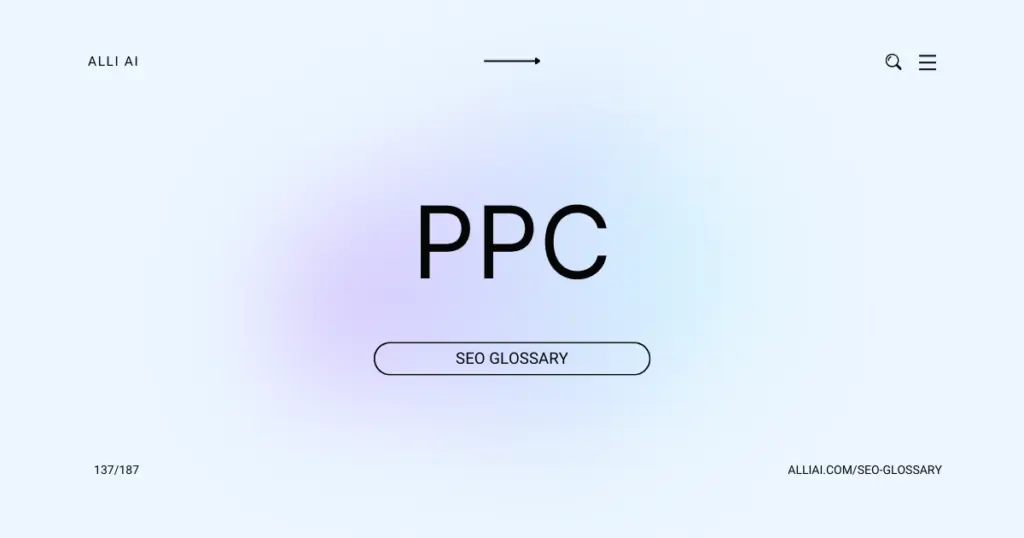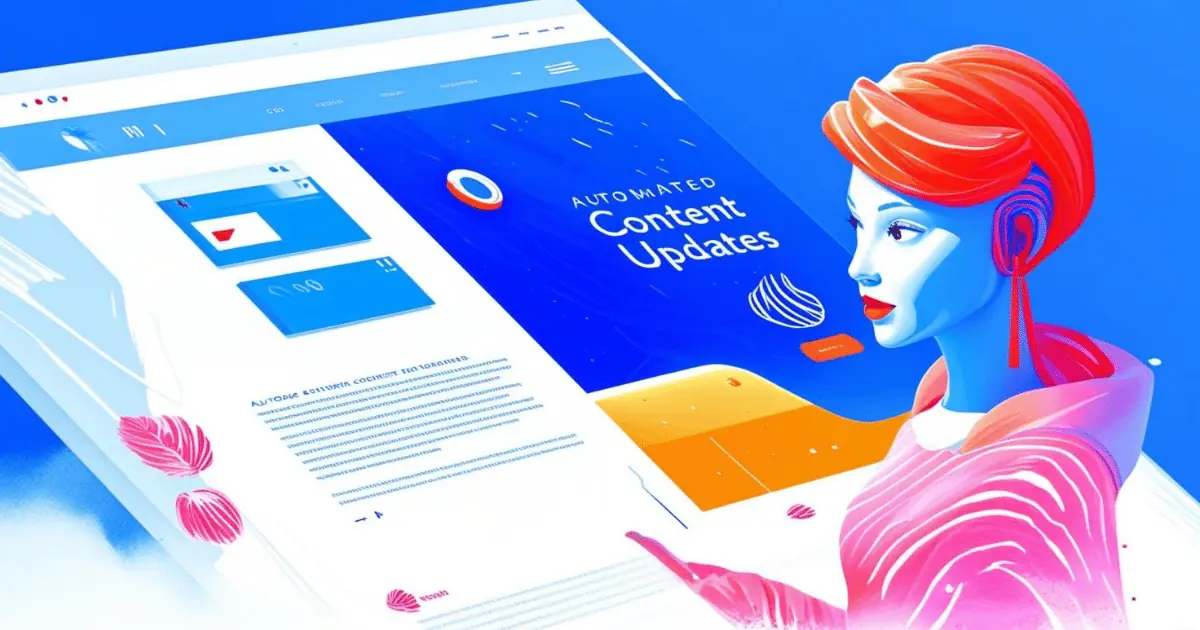What Does PPC (Pay-Per-Click) Mean?
PPC, or Pay-Per-Click, is an online advertising model in which advertisers pay a fee each time one of their ads is clicked. Essentially, it’s a way of buying visits to your site, rather than attempting to earn those visits organically through SEO or other marketing tactics.
Where Does PPC (Pay-Per-Click) Fit Into The Broader SEO Landscape?
PPC fits into the broader SEO landscape as a complementary strategy to organic search engine optimization. While SEO focuses on improving organic search rankings and visibility through optimizing website content and structure, PPC allows businesses to buy ads that appear on search engine results pages. This direct approach guarantees visibility in search results, regardless of a website’s organic ranking. PPC provides quick results and valuable keyword data, which can be used to refine SEO strategies. Thus, both PPC and SEO are important components of a comprehensive digital marketing strategy, working together to maximize online visibility and lead generation.
Real Life Analogies or Metaphors to Explain PPC (Pay-Per-Click)
PPC marketing is like vending machine snacks. Just as you drop coins into a vending machine and immediately get a snack, in PPC, you pay a fee each time someone clicks on your ad, instantly gaining a visitor to your website.
Similarly, PPC is akin to a taxi ride. You pay for the distance you cover or the destinations you reach, very much like paying for each click that leads a visitor to your destination – your website.
Lastly, consider a toll booth on a busy highway: each vehicle passing through pays a toll for the convenience and efficiency of the route, just as advertisers pay each time a user clicks on their ads, gaining direct access to their website.
How the PPC (Pay-Per-Click) Functions or is Implemented?
1. Keyword Selection: Advertisers select keywords relevant to their business offerings for which they want their ads to appear. These keywords are terms potential customers are likely to use when searching for products or services.
2. Ad Creation: Advertisers create ads that will appear in the search results. These ads typically include a headline, ad copy, and a link to a website or landing page.
3. Bid Placement: Advertisers place bids on how much they are willing to pay for a click on their ad. This bid can be influenced by keyword competition, industry, expected conversion rate, and other factors.
4. Quality Score Assessment: Search engines assess the relevance and quality of the ad and the landing page to the keyword through a Quality Score. This score, along with the bid, determines the ad’s placement.
5. Ad Placement: Based on the bid and Quality Score, the search engine determines the placement of the ad on the search engine results page (SERP). Ads with higher bids and Quality Scores are typically placed higher on the SERP.
6. Ad Activation: Once the ad is live, it is displayed to users who search for the chosen keywords. The ads can be displayed on search results pages or on websites that are part of the search engine’s advertising network, depending on the type of campaign.
7. Clicks and Billing: Each time a user clicks on an ad, the advertiser pays the bid amount. This cost is deducted from the advertiser’s account with the search engine.
8. Performance Monitoring: Advertisers monitor the performance of their campaigns using metrics like clicks, impressions, click-through rate (CTR), and conversion rate to adjust keywords, bidding strategies, or ad copy to optimize the campaign’s effectiveness and return on investment (ROI).
9. Campaign Adjustment: Based on the performance data, advertisers regularly adjust their keyword choices, ad copy, bidding strategy, and budgets to improve their ad effectiveness and manage costs.
Impact PPC (Pay-Per-Click) has on SEO
PPC does not directly affect SEO rankings. Google’s algorithm for organic search results does not consider PPC as a ranking factor. Search engines keep their organic and paid results distinctly separate to maintain the integrity of their search results.
PPC can indirectly influence SEO by increasing website visibility, thereby driving more traffic. This surge in traffic can lead to increased brand awareness and a higher likelihood of gaining natural backlinks, both of which are SEO ranking factors.
PPC ads offer valuable keyword data. By analyzing which PPC keywords generate the most conversions, SEO strategies can be adjusted to target similar keywords organically, potentially improving organic rankings.
Integrating PPC can lead to improved user experience by ensuring consistency between the messaging in ads and the landing page content, reducing bounce rates, and increasing time on site, factors that can indirectly improve SEO rankings.
Running PPC and SEO simultaneously can lead to a higher total click-through rate (CTR), dominating search engine results pages (SERPs) with both paid and organic listings, enhancing overall search visibility which can contribute positively to the brand’s trustworthiness and authority.
SEO Best Practices For PPC (Pay-Per-Click)
1. Define Goals and Objectives: Identify what you are aiming to achieve with your PPC campaign, such as increasing sales, generating leads, or boosting brand awareness.
2. Keyword Research: Use tools like Google Ads Keyword Planner, SEMrush, or Ahrefs to find relevant keywords with good search volumes. Include both short-tail and long-tail keywords.
3. Segment Keywords: Organize your keywords into relevant groups so that they can be more effectively targeted in ad campaigns. This increases ad relevance and Quality Score.
4. Craft Compelling Ad Copy: Write clear, persuasive ads that utilize your target keywords. Ensure your ad speaks directly to the benefits the user will get from clicking on your ad.
5. Optimize Landing Pages: Ensure the landing page relevantly aligns with your ad in terms of content and keyword usage. The page should have a clear call-to-action (CTA) and should load quickly.
6. Set Up PPC Campaign: Go to your chosen PPC platform (like Google Ads), and set up your campaign. Choose the type of campaign, set your bid strategy, budget, and enter your keywords.
7. Use Ad Extensions: Enhance your ads with extensions such as site links, callouts, and structured snippets to increase ad visibility and effectiveness.
8. Targeting Settings: Adjust settings for geography, device type, language, and scheduling to match your target audience’s characteristics.
9. Track and Measure: Use Google Analytics and other tools to track the performance of your campaigns. Pay attention to metrics like click-through rate (CTR), cost per click (CPC), and conversion rate.
10. Optimize and Refine: Regularly review campaign performance to tweak and optimize. Test different elements like ad copy, keywords, or landing pages to find what works best.
11. Negative Keywords: Continually update and add negative keywords to your campaigns to exclude irrelevant traffic and reduce wasted spend.
12. Budget Management: Adjust your budget based on the performance and profitability of your campaigns. Scale up the budgets for high-performing campaigns and reduce for lower performers.
Common Mistakes To Avoid
1. Neglecting Keyword Research – Regularly update and refine keyword lists to ensure relevance and competitiveness.
2. Ignoring Negative Keywords – Regularly add negative keywords to filter out unwanted traffic and reduce wasted spend.
3. Overlooking Match Type Settings – Use the appropriate keyword match types (broad, phrase, exact) to balance reach and relevance.
4. Failing to Optimize Ad Copy – Continuously test and tweak ad copy to improve click-through rates and campaign performance.
5. Not Using Ad Extensions – Utilize ad extensions to enhance the visibility and effectiveness of ads.
6. Poor Landing Page Alignment – Ensure that each ad links to a landing page that closely matches the promise and intent of the ad.
7. Not Tracking Conversions – Implement and monitor conversion tracking to measure and optimize the ROI of campaigns.
8. Disregarding Mobile Users – Optimize ads and landing pages for mobile devices to capture this significant segment of traffic.
9. Overlooking Bid Adjustments – Use bid adjustments to optimize spending based on location, device, and schedule.
10. Ignoring Campaign Settings – Tailor campaign settings, like location targeting and ad scheduling, according to audience behavior and preferences.
11. Failing to Segment Campaigns – Organize campaigns into clear segments (e.g., by product line or target audience) to improve manageability and performance.
12. Not Utilizing Remarketing – Implement remarketing strategies to re-engage visitors who did not convert initially.
13. Underestimating Analytics and Reporting – Regularly review and analyze performance data to inform campaign adjustments.
14. Lack of A/B Testing – Continuously conduct A/B testing to identify the most effective strategies and elements.
15. Setting and Forgetting – Regularly review and adjust campaigns instead of leaving them to run without oversight or updates.
16. Inadequate Budget Management – Monitor spending closely to avoid exhausting budgets prematurely and to optimize allocation across campaigns.
17. Not Keeping Up With Platform Updates – Stay informed about updates in PPC platforms and adjust strategies accordingly.
18. Ignoring Competitor Actions – Monitor competitor strategies and performance in PPC to stay competitive and identify opportunities.
19. Forgetting Seasonal Adjustments – Adapt PPC efforts to capitalize on seasonal trends and events relevant to the business.
20. Overreliance on Automated Bidding – Manually review and potentially adjust automated bidding settings to ensure they align with business goals.






